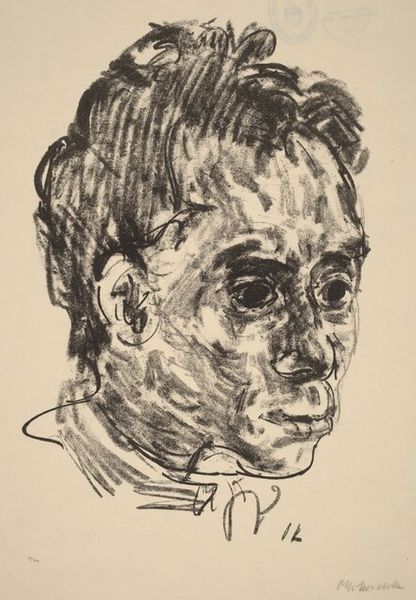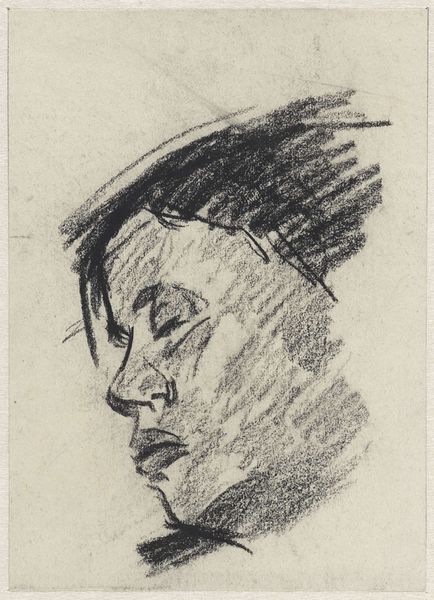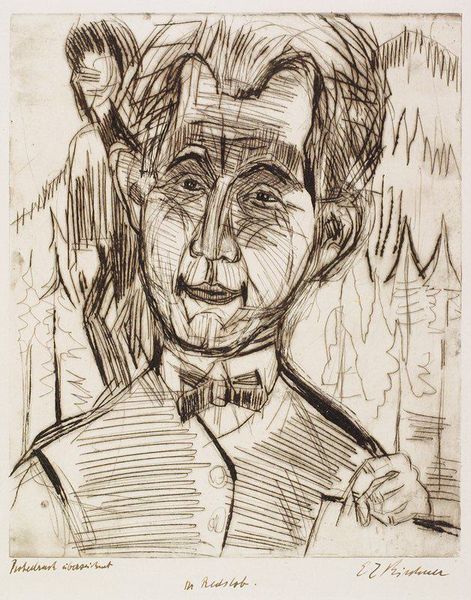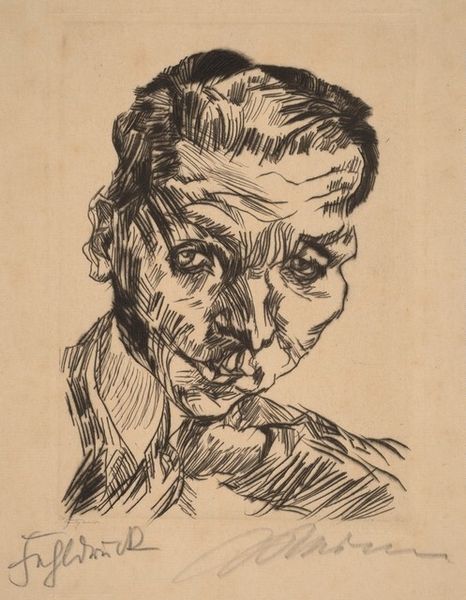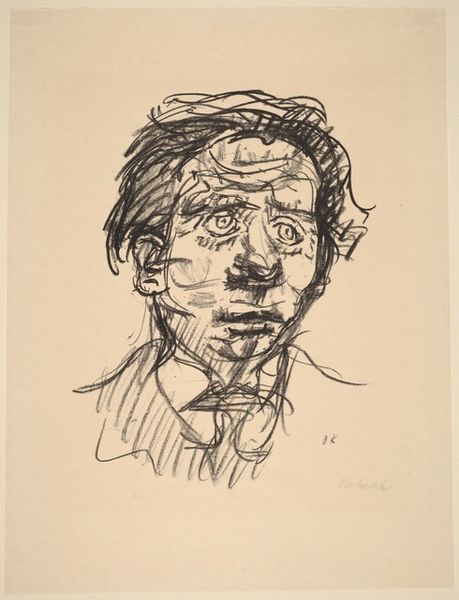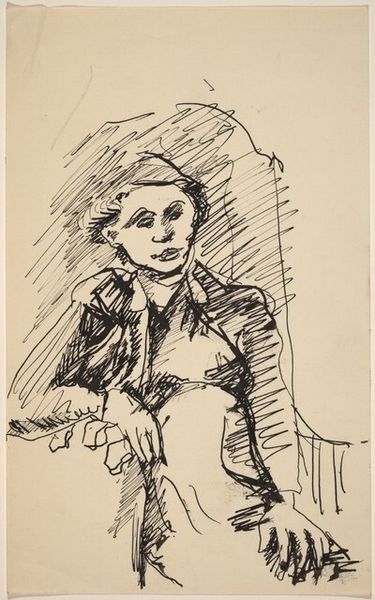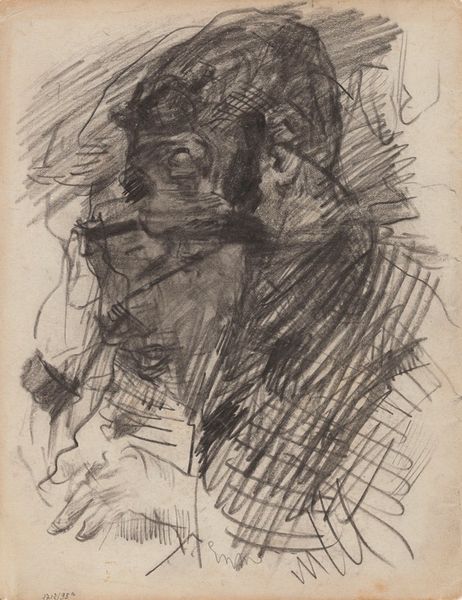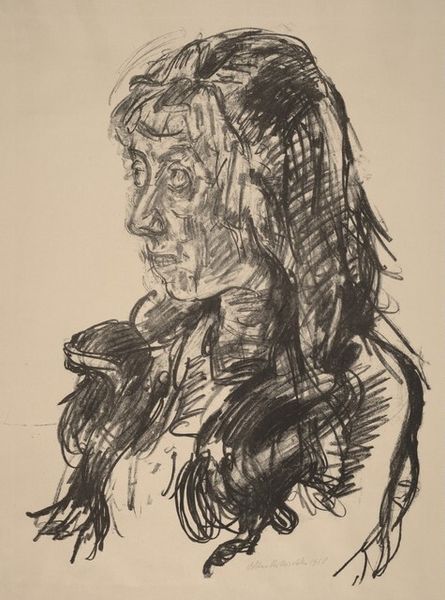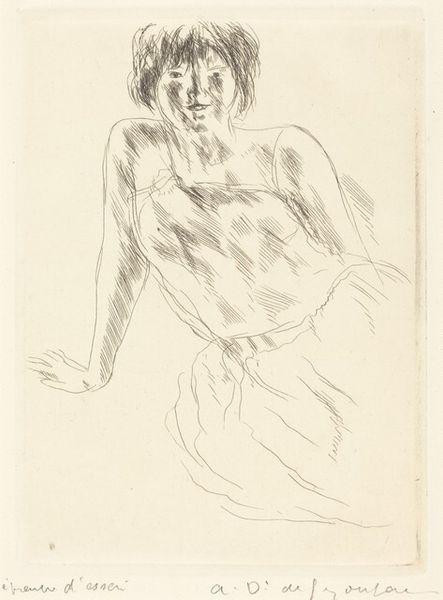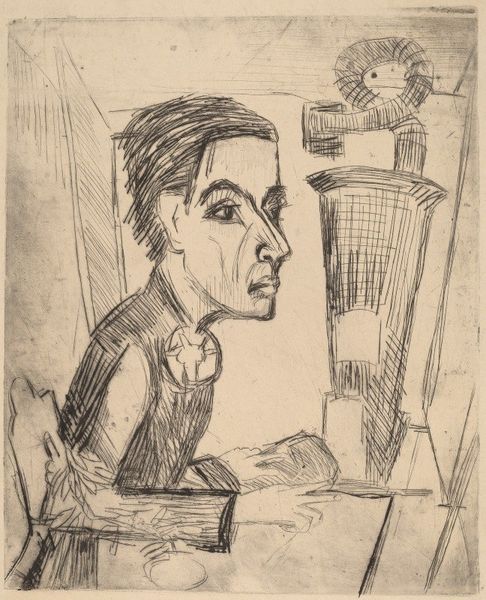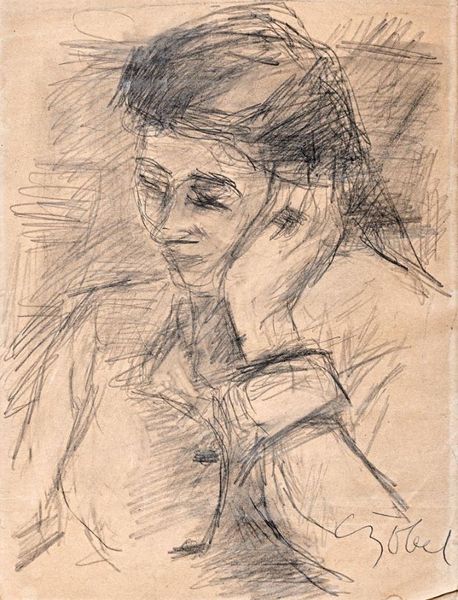
drawing, lithograph, print, graphite, charcoal
#
portrait
#
drawing
#
self-portrait
#
lithograph
# print
#
pen sketch
#
german-expressionism
#
expressionism
#
graphite
#
portrait drawing
#
charcoal
Dimensions: 24 x 18 1/2 in. (60.96 x 46.99 cm) (plate)32 13/16 x 22 5/8 in. (83.34 x 57.47 cm) (sheet)
Copyright: No Copyright - United States
Curator: Here we have Oskar Kokoschka’s 1919 lithograph, "Portrait of Max Reinhardt." Editor: The initial impression is intense; there's an almost frenetic energy to the lines, isn't there? They create a sense of unease, maybe even anxiety in the subject's gaze. Curator: Indeed. The piece utilizes stark contrasts and agitated lines characteristic of German Expressionism. Observe how Kokoschka distorts the figure, emphasizing specific features. Look closely at the sunken, almost haunted quality around Reinhardt's eyes, amplified by the cross-hatching. It disrupts the traditional portrait form. Editor: And that disruption speaks volumes about the context of its creation. This wasn't simply about capturing a likeness; this was produced in the aftermath of World War One and amidst significant social and political upheaval in Germany. Max Reinhardt, a prominent theater director, becomes a figure embodying that postwar anxiety and the loss of innocence. His penetrating gaze seems to confront the viewer. Curator: Precisely. There is great intentionality in Kokoschka's manipulation of line and form. See how he builds the figure. He prioritizes emotional impact above photographic accuracy. The diagonal hatching that defines the shape of his suit actually seems to pull him apart and gives one the impression that he's dissolving. Editor: This speaks to the broader theme of disillusionment permeating postwar European society. It underscores the psychological weight and spiritual emptiness many felt at the time. Reinhardt, although successful, is presented as a fractured figure – reflective of a society grappling with immense trauma. Was the use of drawing rather than oil an aesthetic or a socioeconomic choice by Kokoschka, do you think? Curator: More likely, a way to embrace a different kind of line. Oil gives precision while the scratching in of charcoal, graphite, and lithographic crayon affords a rawness. What some people have to say of expressionism is that the lack of refinement or finish is very deliberate. Editor: Absolutely, the lithographic process mirrors that sense of incompleteness and uncertainty of that era. In viewing the art through both formal elements and its societal reflection, a poignant commentary on individual and collective turmoil is revealed. I see now just how this technique mirrors his mood and circumstances. Curator: Kokoschka’s subversion of portraiture enables deep expression of a postwar state of mind. Editor: It all harmonizes to form this piercing social record through an individual expression.
Comments
No comments
Be the first to comment and join the conversation on the ultimate creative platform.
